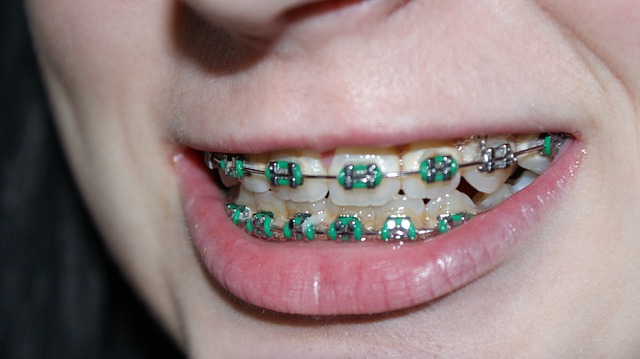
As moms, we all know how tough it is to teach our kids to take care of themselves. When it comes to their teeth, that challenge becomes even more difficult. Sometimes, our children don’t brush and they rarely floss. We graciously take them to the dentist to get their cavities filled only for us to watch the cycle continue.
Then, by the time they finally do learn to take care of their teeth, it’s time for braces—a whole new experience to learn and endure. From the terrible twos to the tricky teens, teeth never seem to be easy (or cheap!) for us and our children. So with all of this in mind, I sat down with Dr. Donna Galante—a dentist and Elite Invisalign provider based in Rocklin—to get her insight on braces, oral hygiene, and more.
How many adults vs. teens do you treat on average?
70% of our patients are teenagers and 30% are adults.
What are some of the challenges teens with braces face?
Oral hygiene is one of the biggest challenges I see with teens. Without decent brushing and flossing skills, it is common to see staining of their teeth, decay/cavities, and gingivitis. Another major challenge teens with braces face is learning to stay away from their favorite snack foods such as popcorn, gum, or hard and chewy candies. These foods lead to potential breakage of braces.
Social norms and implications are also common challenges—especially for high schoolers. It can be a very challenging time fitting into their peer groups. Braces also don’t make for great social media photo opportunities.
Teens that play contact sports are more likely to receive injuries to their mouth, teeth, and face (basketball, wrestling, soccer, baseball, etc.). If impacted, the braces often will break off the teeth and possibility embed into the teen’s lips or cheeks. Some teens also experience ulcers with braces.
Do you recommend any proven solutions to these challenges?
Clear, ceramic types of braces can be less noticeable and may help the social stigma of metal braces. However, they are still braces and need to be treated like them. This still includes watching what you eat, having excellent oral hygiene, and knowing your braces can be damaged during a sporting event. Invisalign Clear Aligners are a great solution to almost all challenges that braces bring. They are almost unnoticeable which makes them more socially acceptable. They can be removed to eat which allows your teen to limit their food habits less. Also, because they are removable, your teen can practice good oral hygiene by brushing and flossing very easily. Invisalign also acts like a mouthguard so it can prevent mouth related injuries during sporting events. They are also smooth against the lips and cheeks so no ulcers can form.
How can parents know they are choosing the right type of treatment for their child?
The first step to choosing the right treatment is seeing an orthodontic specialist who is trained in orthodontic treatments and understands growing patients’ needs. These specialists can evaluate your child’s growth and development and give you a treatment plan that is the best fit for your child.
If you are interested in early orthodontic treatment or Invisalign for your child, it is important to see a specialist who has specific expertise in these areas.
Have you ever treated a parent and his/her teen at the same time? If so, what was this like for both you and the patients?
Yes! This happens all the time. We often encourage families to do it together so they can support each other. It works quite well this way as the parent(s) and children are experiencing the same things. They can support each other, and, best of all, most orthodontists will offer a family discount if everyone starts at the same time.
What are some of the most common concerns you hear from parents when they bring their child or teen to the orthodontist for the first time?
With braces, parents are often concerned about the length of time in treatment, the cost of the procedures, and appointment scheduling and how it will impact their school or work schedules.
How do you address these concerns?
Regarding the length of treatment, we let them know it is an estimate and with great cooperation, they may finish 3-6 months earlier or if poor cooperation they may finish 3-6 months later. We let them know this is a partnership and we will work together to get great results. With regards to concerns with the cost of treatments, we provide an incredibly flexible payment plan with minimal to zero down payment and very affordable monthly payments. Most orthodontic offices do something similar. This makes the process affordable as the payments are decided by the parents and not by us.
As far as appointments, the majority of their visits will be after school with the exception of removing or adding/putting on braces. Invisalign patients generally have after school appointments as they have fewer and shorter appointments.
Concerns with Invisalign are handled a little differently than with braces. Patients are given multiple aligner sets at a time and get switched out every week. If your child loses a set, they are advised to go to the next set and wear it a few extra days.
What can a parent expect during their child’s first visit to the orthodontist? Is there anything most parents find surprising during that first visit (e.g. how long their child will be expected to wear their retainer after treatment)?
We do find that parents are quite shocked that retention is for the lifetime. As specialists, we make a big deal about this and we let parents know that retainers need to be replaced over time to ensure their child’s teeth stay in place. We often recommend VIVERA retainers or Invisalign because they receive four sets for a very affordable price; it truly is the insurance policy for keeping your child’s smile straight and beautiful forever.






















Great article! It seems like every kid (and some adults) these days are all getting braces at one point in their lives.
What are some good incentives to get kids to be on top of their brushing and flossing schedule? For some reason, brushing teeth seems to happen daily, but flossing does not.